Disney’s Jungle Cruise Power of Woke (Part Two)

Ah, the Jungle.
Greenery so dense you can’t see a foot beyond your eyes. The air is thick, hot, redolent, and sultry, it reeks of wet mold and rotted vegetation. Anything that brushes up against your leg sends a spidery tingle of alarm over your entire body. You don’t need to see the eyes to know that you are being watched, you can feel them all over you. The sounds are…well believe or not they, are exactly what you heard in the old jungle movies to include the “ooh-ooh-eeh-eeh-ah-ah” thing.
The truth is old Hollywood got a lot that stuff right.
Around the turn of the last century, a number of archeological discoveries were being made in Central America. The ancient Mayan capital of Tikal was found for the first time (by whites anyway the natives had viewed it as “that old junk” for some time) in the 19th century.
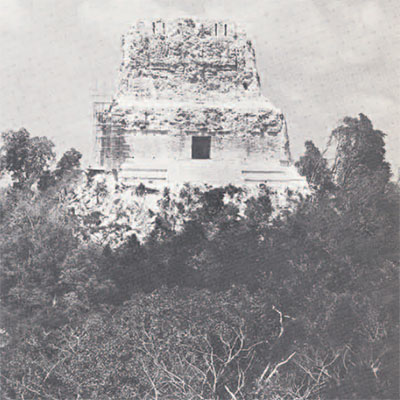
Machu Pichhu was rediscovered right before the Great War. These new finds by explorers leant themselves to the old tales of the golden city of El Dorado.
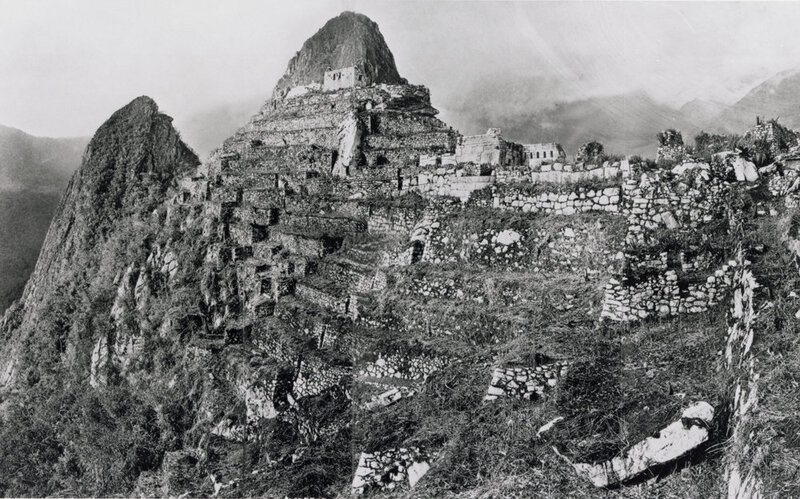
The real-life exploits of Sir Richards Francis Burton mixed with the tales of H. Rider Haggard to create a common setting in the minds of men who were becoming enslaved by the cities they lived in. The jungle was a place where you could vanish into the bush and only emerge about once a year to sell your ivory and buy supplies. It appealed to the desperate need of the early 20th-century man, for the primal.
Although it was also a place of primitive horror. It was cannibal natives (still a thing), mega-predators, and rogue white men. It was the Heart of Darkness. Yet it was also Kipling’s Jungle Book and Rice Burroughs’ Tarzan.
In the early twentieth the Jungle fired the imagination. It was a place of danger, mystery and adventure where anything seemed possible.
Although, some things were less likely than others.
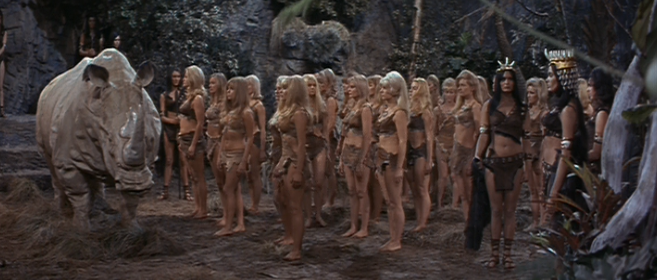
That picture brings us neatly to the topic of the Jungle Movies. They started up in the silent era and were ground out like sausages during the 1920s. They varied wildly in quality and budget, but the plots weren’t usually too different from each other. The expedition goes deep into the bush and finds some anomaly that is a horror in the eyes of Man and God. The apex of this era was the original King Kong. Jungle movies were still a popular genre in the 1930s with the Tarzan movies being a good referent for the tropes of that period.
The Jungle Movies slammed to a halt in 1942. If an American movie character was in the jungle during those years, he was not looking for treasure and excitement. Although, excitement had no trouble finding him.
After Hiroshima, the jungle movies kind of came back but the genre was more mature. African Queen starring Bogart and Hepburn came out in 1951. The genre still gets its visitors now and then; Apocalypse Now (1979), Predator (1986), Congo (1995), The Green Inferno (2013), just off the top of my head but there are plenty of others.
In the 1940s ecology was a Right-wing thing. Lefties for their part were quite enthusiastic about raping the Earth. So, Walt Disney, being a good Republican started a series of nature documentaries called the True Life Adventures. And they were a huge hit. Perhaps too big. I strongly suspect the True Life documentaries were the birthplace of the Leftwing Environmentalist movement.
When Walt decided to get into the amusement park business one of the things he felt a need to incorporate was the True Life Adventures. On Disneyland’s opening day, one of the few rides that were actually operating day was the Jungle Cruise. Admittedly, in rather a different form than it is today.
At first, the ride was played straight. It was a trip deep into the jungle. Unknown perils were ahead, with beasts and natives awaiting the guests. The Captain of the boat being the guide and lead actor. The Captain is the one part of the ride that has stayed more or less the same; the success or failure of the individual ride is very much dependent upon his performance.
The Jungle Cruise was the first ride to incorporate animatronics, (largely because live animals would be at best unreliable performers and at worst an active menace to the guests). Gradually comedy began to filter its way into the ride and its more iconic scenes began to be added.
The Imagineers began to fill in an extremely elaborate backstory for the jungle cruise.
Here is a backstory of just one of the stars of the Jungle Cruise ride: Trader Sam. This is the kind of history that the old-school Imagineers would create for a single freaking robot. You can skip the italicized text and just go to the next part. This is only to give you an idea of the care the guys that were laid off or forcibly retired this year would put into the backstory of a minor animatronic.
Sam is a (presumed) South American indigenous man who has a long history of affiliations with Disney characters, having an extended (if not outright immortal) lifespan. He was the grandson of one Billamongawonga AKA Trader Bill, a trader of shrunken heads which seemingly lead to Sam becoming part of the family business. Sam’s family was also cannibalistic and largely composed of warriors. Sam himself had an interest in travelling the world to search for enchanted items and different recipes for beverages.
The earliest references to Sam chronologically places him as having been a grown man during the golden age of piracy in the 18th century. Sam supposedly ran a pub frequented by pirates where he traded for a spyglass from the historic pirate Blackbeard while having held attraction to his daughter Angelica. Through unknown means around this time, Sam obtained a locket which had belonged to either the sea deity Davy Jonesor Calypso. Another trophy of Sam’s from this era was a ship-in-a-bottle of The Wicked Wench, a notorious pirate ship best known for their sacking of the cursed island of Isla Tesoro.
Sam’s pub was frequented by the mother of pirate Captain Jack Sparrow, both of whom he befriended. Sam and Sparrow had even spent time together on Isla de Pelegestos when Jack convinced the Pelegestos people that he was their chief. Following Jack’s mother’s demise, her head was transformed into a shrunken-head which passed ownership from Jack’s father Edward Teague to Jack himself. Jack left his mother’s head in Sam’s possession to honour how much she loved the pub and Sam would honour this wish by bringing it with him whenever he established a new bar location.
In the early 19th century, Sam befriended the Swiss Robinson family of New Switzerland in the East Indies. Around the mid 1800s he also befriended one Lincoln Costain, a cowboy from Texas who got shanghaied onto the Hawaiian Island of Kauai. Sam kept in contact with both the Robinsons and Costain via letters which they exchanged via bottles at sea.
Throughout the 19th century, Sam also began working as an early scuba-diver and became good friends with Canadian harpooner, Ned Land. Sam seemingly accompanied Ned in San Francisco around 1868 when Ned was one of many sailors recruited to hunt an alleged, “Sea-monster” which was destroying ships. The two were separated when Ned’s ship was attacked by the monster though Ned survived and later sent Sam a harpoon as a gift while recanting the story which transpired between their last meetings.
Sam had some apparent familiarity with the infamous eruption of Krakatoa in Indonesia which occurred the August 26 of 1883. One of Sam’s drinks would be inspired by the eruption and named the, “Krakatoa Punch”. Sam also was familiar with Prof. Archimedes Porterand his daughter Jane, obtaining or having taken a photograph of them during the beginning of their expedition to the Congo. Another close friend of Sam’s around this time was a drunkard lighthouse-keeper named Lampie in the seaside American town of Passamaquoddy. Lampie sent neurotic letters to Sam when a dragon came to Passamaquoddy but no-one believed him.
Around the 1890s, Sam also befriended military Colonel Theodore “Teddy” Roosevelt who he would frequently go on adventures with. Through his friendship with Roosevelt, in the early 20th century Sam befriended an organization known as the Adventurers Club; a splinter-faction of the Society of Explorers and Adventurers which was founded by S.E.A.-member Merriweather Adam Pleasure. Sam would retain close affiliations with the Adventurers Club and its members for decades to come.
One expedition of Sam’s took him to the East-African port of Harambe where he travelled with the Kilimanjaro Safariscompany on elephant-back. At some point prior to 1912 he saved the life of one Anna Mary Jones and became close with her family the Jones’, even becoming a frequent contact of her son Henry “Indiana” Jones, Jr.. On the November 6of 1912, Sam was contacted by one Vanessa Capshaw of the New York City Preservation Society in New York City, NY. Capshaw sent Sam a portrait of his supposed grandfather Trader Bill which was recovered from the Hotel Hightower as Trader Bill had been the right-hand-man to one Harrison Hightower III prior to Hightower’s 1899 death.
In 1911, the Jungle Navigation Company was founded by S.E.A. member Dr. Albert Falls with the company becoming close to Sam and his cousin Chief Nah-mee. Sam was seemingly close with Dr. Falls and knew how to brew his favourite drink the, “Schweitzer Falls”. Sam also became close to a Jungle Cruise skipper known as Cap’n Kevin who he was seemingly romantically involved with and the two spent nights together in Kevin’s hut. Sam was also close with riverboat salesman Charlie Allnut who offered Sam transport alongside advice in dealing with certain Jungle Navigation Company boats and employees.
In 1913, Sam joined forces with Teddy Roosevelt and Brazilian explorer Colonel Cândido Rondon to plan an expedition through the Amazon Rainforest. This mission was to map out the River of Doubt but also for Roosevelt to try and reclaim his youth following disappointment at having lost the last presidential election. The mission lasted from 1913 to the April of 1914 and while it was successful, it resulted in Roosevelt contracting illnesses which slowly killed him leading to his 1919 death.
Sam’s personal businesses began booming thanks to the JNC following 1931 due to then JNC president Alberta Fallsbeginning the, “Jungle Cruise” riverboat tours as it brought many tourists, Hollywood filmmakers and new businesses to Sam’s domain. Around this time, Sam developed a reputation for being the, “Jungle’s Head Salesman” and took in a pet baby Indian elephant named, “Ellie”. Sam also ran a shop known as Tropical Imports which was involved in aiding the many denizens of the, “Adventureland” locales. By 1938, Sam would have written at least five books under the pen-name of, “T.S.” all of which were featured in the library of the Jungle Navigation Company’s headquarters, these books being: “Friends for Dinner”, “What’s in a name”, “Top Hats and Umbrellas”, “Banana Trade” and “The Missing Mask”.
Throughout the 1930s, Sam also frequently accompanied and assisted a now adult archeologist Indiana Jones on his adventures, having also been close with Sam’s contacts Marcus Brody, Marion Ravenwood and Sallah Mohammed Faisel el-Kahir. C.1931 Sam travelled to the Lost River Delta of Cusco, Peru where Indiana Jones excavated the Temple of the Crystal Skull. Circa 1935, Sam assisted Indiana Jones in the containment of three, “Voodoo” dolls made by the mad priest Mola Ram which depicted Indiana and his accomplices Willie and Short-Round. This same year Sam assisted Sallah and the Lost Delta Archaeological Expedition in the Lost Delta of Cambodia with their excavation of the Temple of Mara. When Jones disappeared in the temple, Sallah reached out to Sam to have him aid in bringing tourists to the temple for additional funds.
Around the mid 1930s he opened up a new bar in the Polynesian isles known as, “The Enchanted Tiki Bar” though he would kill his opening day crew and use their heads for decoration. The bar was also decorated with totems of Māori deities while also seemingly having connections to the Enchanted Tiki Room where he was a friend with the sentient bird Rosita. When the, “Adventureland” region(s) hosted the Adventure Trading Company, staff of the Tiki Bar became involved with giving new company members the, “Tiki Mask Juju” in return for assistance after they lost the recipe for Sam’s drink the Juju Juice. In the ’30s, Sam also visited the South Seas Club of Hollywood, LA which he kept several mementos of.
Following 1937, Adventurers Club members such as Pamelia Perkins, Otis T. Wren, Emil Bleehall, Jr. Samantha Sterling, Hathaway Browne, Prof. Fletcher Hodges and Colonel Suchbench began sending Sam memorabilia from their old headquarters on Pleasure Island, Florida to decorate the Enchanted Tiki Bar. Amongst the possessions were a ventriloquist’s dummy called, “Slappy” left by the colonel to be in Sam’s caretaking while the Adventurers Club went on an expedition. In 1939, Sam attended a seaside trinket convention where he sold a multitude of seashells.
In 1941, Sam was hired by one Walt Disney to give him a tour of South America. Sam and Walt began quite close with Disney going on to become the Enchanted Tiki Bar’s best customer. Throughout the 1940s, Sam also used his brewing abilities to assist Adventurers Club resident aviator Hathaway Browne. During World War 2, Sam travelled to Casablanca, Morocco where he befriended cafe owner and fellow bartender Rick Blaine. By the 1950s, other pieces of decor included within the bar were a Lamp which once belonged to a powerful Arabian genie of Agrabah, a doll of Donald Duck, figure of the Florida Orange Bird, and yeti mask from the kingdom of Anandapur.
Sam’s manager in the bar was a former J.N.C. skipper by the name of Skip Documentary who in the 1950s assisted Trader Sam in opening a new bar location known as the Grog Grotto. This Grog Grotto was located in a different Polynesian locale within a village overlooking the Seven Seas Lagoon which held many of the same tiki gods as the Enchanted Tiki Room, most notably being Maui whose likeness was very frequently used in the Grog Grotto. In this village, Sam became something of a womanizer who had multiple hula-dancer girlfriends. Sam became quite fond of Hawaiin popular music such as Annette Funicello’s Hawaiiannette (1960) and the works of Elvis Presley.
Between around 1950 and 1960, Sam also seemingly became acquainted with the Fredricksens, Carl and Ellie whom he took the habit of collecting coins to travel to Paradise Falls, Venezuela for. A notable customer of the Grog Grotto was on J. Thaddeus Toad who Sam had to confiscate the car-keys of due to a combination of the Toad’s wild driving skills with alcohol having the potential to be disastrous. In 1955, Sam travelled to the tropical Blustery Bay aboard a shrimping-vessel known as the Miss Tilly only for the bay to have been hit by a massive hurricane. The storm impaled the ship atop the volcanic Mount Mayday in the colony of Placid Palms, later renamed to Typhoon Lagoon. In the 1960s, Sam befriended one Lt. Robin Crusoe, U.S.N. and the two stayed in contact while Crusoe was marooned on a Polynesian island. The Grog Grotto would continue its operations into the 1970s with paraphernalia being featured within such as a necklace depicting one Colonel Nedley Lostmore and a life-preserver from the Norwegian company Vest Gruppen.
And now he’s gone!
The SJWs at the Stories Matter group felt that Trader Sam was nowhere near victim enough for their liking. Sure, they declared him to be a racist caricature but if you think that’s case go back and actually read the biography. Or travel to a third-world jungle because I guarantee you won’t have any trouble finding someone who looks just like him.
2021 is year Zero at Disney Parks, * and history is being frantically rewritten.
The old owner of the Jungle Navigation company was Albert Falls. “On your left is Schweitzer Falls, named after Doctor Albert Falls.”
The new owner of the company is Alberta Falls: Alberta was born in 1911. Her mother, Sneh, was a world-renowned artist from India and her British father, Albert Falls Jr., was an art scholar. Young Alberta was always considered a rambunctious “free spirit” who was most at home during the family’s summer visits to grandma and grandpa Falls in Adventureland. She climbed trees, swam in the river, and enjoyed a special bond with her explorer grandfather and her “adopted family” of skippers who enjoyed the fearless little girl’s adventurous nature.
Yes, she’s a half Desi business girl in a colonial world that doesn’t need any man! But that’s just the start.

One of the main attractions has always been the five safari members who have been treed by an angry Rhino. This has now been turned into a Totem Pole of Woke Bingo.
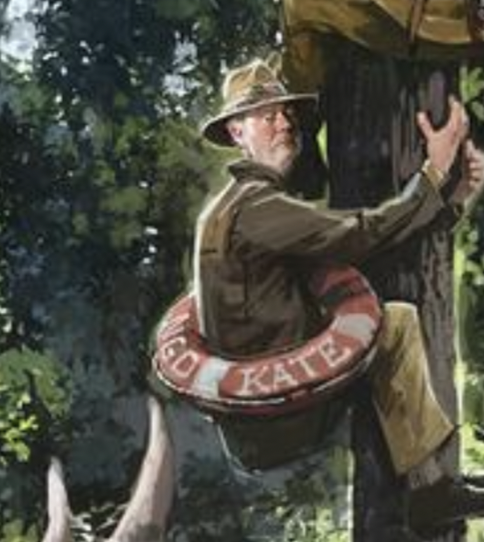
Closest to the rhino is Felix Pechman XIII (AKA the Hapless White Guy) who recently left his home in Silver Springs, Florida, and landed a position as a skipper with the Jungle Navigation Company Ltd. In an unexpected turn of events, Alberta had no choice but to ask him to lead his very first boat tour with her VIP guests. Unfortunately, Pechman’s trademark bad luck has followed him to the jungle.
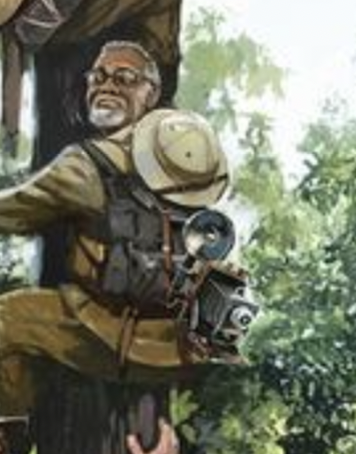
Above Skipper Felix is Dr. Leonard Moss, an acclaimed Canadian botanist. Having successfully photographed and cataloged every plant in the frigid Nova Scotia peninsula, Dr. Moss decided that his next photo excursion should be to a warmer climate
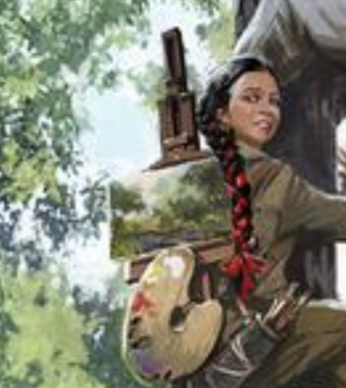
Above him is the celebrated Mexican artist, Rosa Soto Dominguez (Are you kidding me?). Known in the art world as La Rosa, she was on her way back to Mexico City from her latest gallery opening in Paris when she received a special invitation from her very close friend, Alberta. Rosa looked forward to their reunion in Adventureland when she would also get to paint some of the exotic wildlife, especially given her fascination with rhinos. As luck would have it, she ended up a little too close and personal with one.

Next is Japan’s preeminent entomologist and a member of the famed Society of Explorers and Adventurers, Dr. Kon Chunosuke (Sure, Why not?). He traveled to the jungle on a mission to find new specimens for his world-class collection of insects. As an admirer of Dr. Falls’ legacy, Chunosuke was hopeful that this younger Falls would be able to lead the way to the legendary Myrmecoleon, also referred to as the “lion of ants.”. Unfortunately, he has only been able to find butterflies, mosquitos, and a rhino.
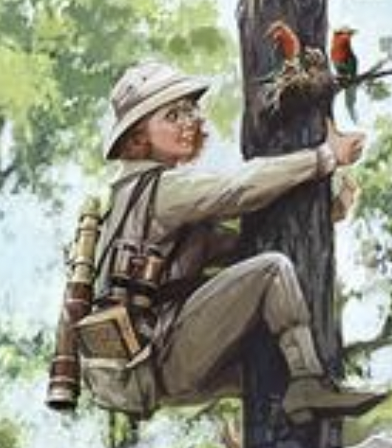
Up top is Siobhan “Puffin” Murphy (Oh for fuck’s sake!!), who traveled all the way from the small island of Dingle, Ireland, to pay a surprise visit to her distant cousin twice removed on her father’s side, Alberta. Siobahn was nicknamed “Puffin” because of her love for the puffin birds that nest in the rocks of her seaside hometown. Many believe that it was Puffin’s love of exotic birds that drove Skipper Felix to get a little too close to an oxpecker perched on a particularly grumpy hippo.
This is the most ludicrously diverse totem pole in history. There were no checkboxes in the colonial world.
A lot of you are wondering, why all the fuss about the backstory? You go to the park and you ride the ride, who cares about the made-up bullshit story surrounding a few moving statues?
Here’s the big thing.
The isn’t important that the audience knows the backstory, but it is vital that the Imagineers did, because stories are the prism through which we view the world.
They are the foundation of our reality as we know it. Because every story you have ever heard influences the way you view reality and all of the ways you react to it.
“Suppose an emperor was persuaded to wear a new suit of clothes whose material was so fine that, to the common eye, the clothes weren’t there.
And suppose a little boy pointed out this fact in a loud clear voice . . .
Then you have The Story Of The Emperor Who Had No Clothes.
But if you knew a bit more, it would be The Story Of The Boy Who Got A Well-Deserved Thrashing From His Dad For Being Rude To Royalty, And Was Locked Up.
Or The Story Of The Whole Crowd That Was Rounded Up By The Guards And Told “This Didn’t Happen, Okay? Does Anyone Want To Argue?”
Or it could be a story of how a whole kingdom suddenly saw the benefits of the “new clothes,” and developed an enthusiasm for healthy sports* in a lively and refreshing atmosphere that gets many new adherents every year, which led to a recession caused by the collapse of the conventional clothing industry. It could even be a story about The Great Pneumonia Epidemic of ’09.” **
How you see these things all depends on the stories that you have been told. And much more importantly, the stories you have NOT been told.
That is the whole point of the Stories Matter group, to control the stories through which you see the world.
When this starts to fail as it must, there will be no one who can step in and fix the disaster that will be Disney Parks.
Disney Parks were absolutely dependent on Walt Disney’s Imagineers. There is no one who will take their place.
Because top shelf talent will not work for a Woke company.
Okay, I’m done here.
*(or at least the American Parks, the Japanese have told the SJWs, “suck a fart, we aren’t changing anything.”)
**(Pratchett, Terry. Thief of Time: A Novel of Discworld (pp. 3-4). HarperCollins e-books. Kindle Edition.)

